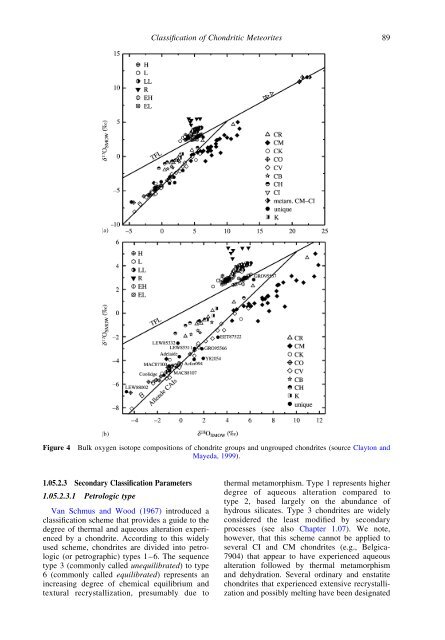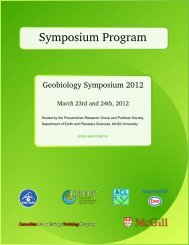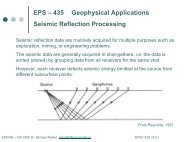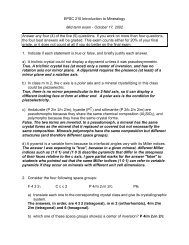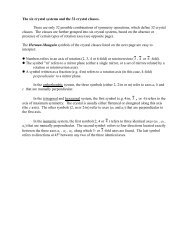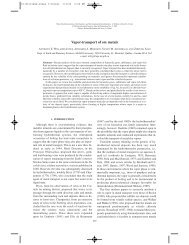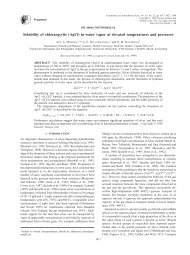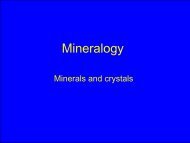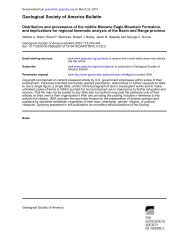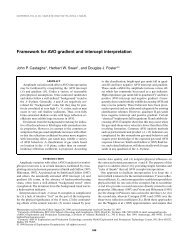05 Classification of.. - Department of Earth and Planetary Sciences
05 Classification of.. - Department of Earth and Planetary Sciences
05 Classification of.. - Department of Earth and Planetary Sciences
You also want an ePaper? Increase the reach of your titles
YUMPU automatically turns print PDFs into web optimized ePapers that Google loves.
<strong>Classification</strong> <strong>of</strong> Chondritic Meteorites 89<br />
Figure 4<br />
Bulk oxygen isotope compositions <strong>of</strong> chondrite groups <strong>and</strong> ungrouped chondrites (source Clayton <strong>and</strong><br />
Mayeda, 1999).<br />
1.<strong>05</strong>.2.3 Secondary <strong>Classification</strong> Parameters<br />
1.<strong>05</strong>.2.3.1 Petrologic type<br />
Van Schmus <strong>and</strong> Wood (1967) introduced a<br />
classification scheme that provides a guide to the<br />
degree <strong>of</strong> thermal <strong>and</strong> aqueous alteration experienced<br />
by a chondrite. According to this widely<br />
used scheme, chondrites are divided into petrologic<br />
(or petrographic) types 1–6. The sequence<br />
type 3 (commonly called unequilibrated) to type<br />
6 (commonly called equilibrated) represents an<br />
increasing degree <strong>of</strong> chemical equilibrium <strong>and</strong><br />
textural recrystallization, presumably due to<br />
thermal metamorphism. Type 1 represents higher<br />
degree <strong>of</strong> aqueous alteration compared to<br />
type 2, based largely on the abundance <strong>of</strong><br />
hydrous silicates. Type 3 chondrites are widely<br />
considered the least modified by secondary<br />
processes (see also Chapter 1.07). We note,<br />
however, that this scheme cannot be applied to<br />
several CI <strong>and</strong> CM chondrites (e.g., Belgica-<br />
7904) that appear to have experienced aqueous<br />
alteration followed by thermal metamorphism<br />
<strong>and</strong> dehydration. Several ordinary <strong>and</strong> enstatite<br />
chondrites that experienced extensive recrystallization<br />
<strong>and</strong> possibly melting have been designated


